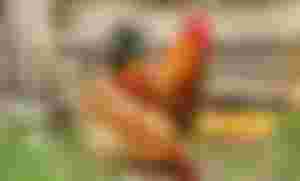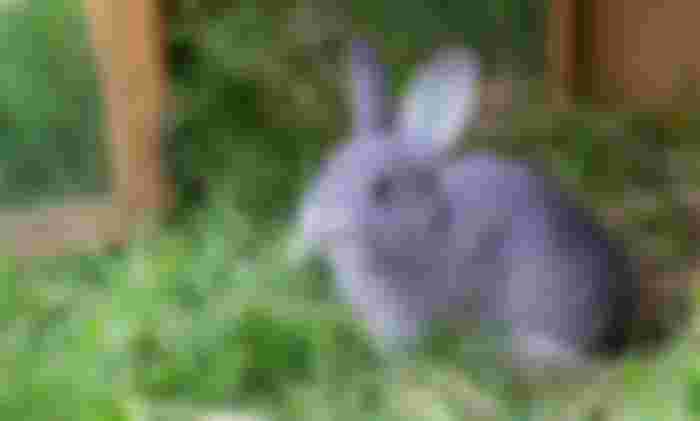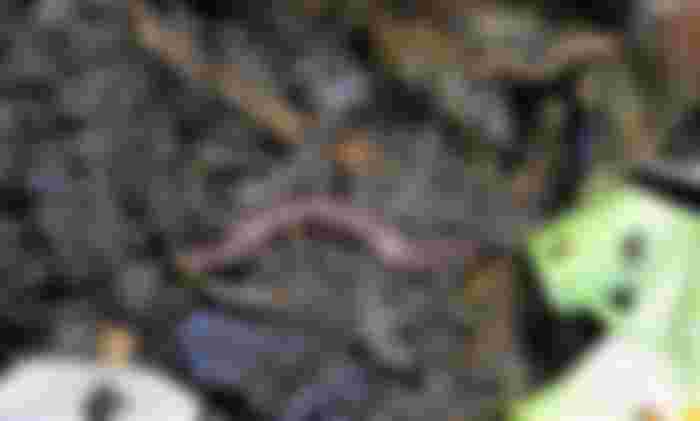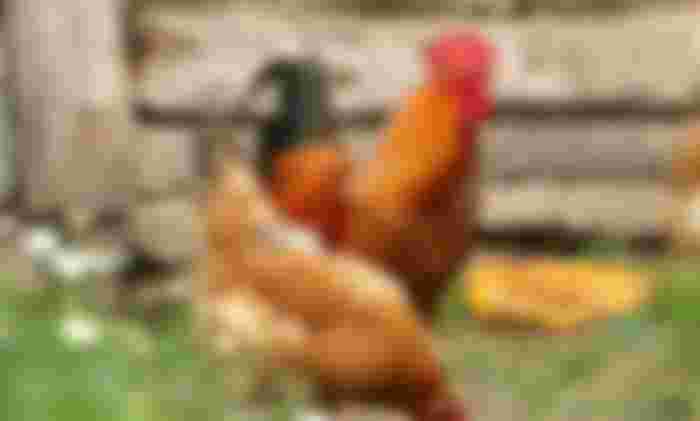In the article about zones, I mentioned that Zone 2 contains the elements we need to visit at least once a day but we don't necessarily want in front of us all the time.
In practical terms, Zone 2 is a lot about small animals that are not pets. Are animals absolutely necessary in the design of an edible garden? It will depend on the size. In the medium size plot we explored, they likely are.
Why? They are essentially amazingly efficient compactors of calories and nutrients. I'm not even talking about killing and processing them, which could be a part. I'm talking about natural side products and how we help each other: they have their needs meet, help keep our garden clean, and provide us with very concentrated forms of food or fertility.
In particular I'm going to talk about three types of animals: worms (red wigglers), birds (chickens, quails and ducks) and rabbits.
Rabbits
Rabbits are amazing animals. They process huge amounts of edible greens and give as result small pellets that can go right into the worm bin.

I've had three rabbits that were half pets. Two were rescued from processing in a farming school, and the third one was a tiny Holland lop we got thinking on breeding. Another option I looked into but never acted on are angora rabbits. These are bred for the hair.
Rabbits can be kept in cages but they need space to move, so think on giving them space to run. If you feed them your edible weeds and garden clips--which are all over the place in edible gardens, they almost don't need extra food and they drink a lot less water. In fact my rabbits didn't drink water at all, which every single breeder I talked to said it was impossible.
I never had more than one rabbit at a time, but if you plan to let them have babies, then you need a more complex setup, like different cages for female and males, and also separate spaces for the moms with their babies.
About the cleaning, here comes one of the favorite strategies of permaculture: compiling function. Put worm bins right under the cages and you solve two problems at a time. You dispose of the rabbit droppings and feed the worms.
Can you let your rabbits free range? Not such a good idea. But you can have then reasonably free with a dog harness and a long leash if you are around or if you have a trained shepherd dog with them. You can also let them free in a controlled environment. But letting them completely on their own not only will be the end of your garden, they will likely be hunt down and killed by predators.
If you have enough space, you could also use rabbit tractors, which are mobile cages that you put in different sections of your garden for the rabbits to eat and fertilize. Make sure they still have their needs met, like shadow and a protected place to sleep.
Rabbits are very sensitive to the sun and the heat. Please keep it in mind.
Red wigglers
As I already mentioned in Designing an edible garden part 6: Composting, red wigglers are specific worms that will process big amounts of compost. These worms eat bacteria, and they break apart matter in the process of searching for food, which helps more bacteria colonize easier as there is more exposed surface.

So red wigglers are perfect to go under rabbit cages, as rabbit manure is among what red wiggler can process and be happy. The left over food from the rabbits is also good compostable material.
We just need to make sure the humidity is right, and the worms are covered.
To aid reproduction, it's a good idea to add to the bin eggshells processed with water about once a week. They need the calcium. And it will render a high quality compost later on.
To collect the composted soil we add new food on top and collect from the bottom (they stay on the top 20 cm or so), or we use different sections if the bins are bigger. The worms will migrate to where the food is and we can collect the old fully processed part.
Birds
When we think on birds for an edible garden, we more or less automatically think on chickens. But it's not always the best option. Chickens will be the best option for most climates with average humidity if we have enough space for them.
Quails
If we have a small plot, quails will be the best option. They can be raised in very small spaces (I'm not saying it's ideal, but it can be done), they put eggs all year around and the eggs are highly nutritious which compensate the size.

Quails are also fairly easy to kill if someone chooses to go that route, and they reproduce very fast. Eggs hatch in about 18 days and they are mature in more or less 6 weeks.
They lay eggs all over the place and don't need special boxes for brooding.
How to keep it clean? if the cages are over boxes with hay, and the bars of the bottom are wide enough, the hay will contain their droppings and eggs and we can collect the eggs right from there. Some people don't use bars at the bottom, but drawers to be able to take the eggs.
As it happens with chickens composting of their droppings will take between six months and a year. We should add carbon in the form of hay, or sawdust quite regularly and move things out from time to time, or we can have an opening at the bottom to collect the composted soil.
Here is a detailed document about how to keep quails.
Ducks
If we live in a very humid climate, with plenty of water around, or if we have one or several ponds, ducks are a very good option.

Now, their droppings are sticky and will create ponds on their own. Keep that in mind too.
Ducks will fertilize the water and keep mosquito larvae in check. Like chickens they are omnivores and will eat whatever they can swallow. (If you ever see a giant duck or chicken, start running.) In some places they use ducks to keep rice fields clean from insects.
They lay eggs in different places, so finding them is like a treasure hunt.
Chickens
Chickens are the best known of the bird species we keep for eggs. They have evolved from their forest ancestors and today we have with them a mutualistic relationship. They need a protected place to be at night as they almost have no night vision. We provide for their needs and they share their eggs (well, not exactly willingly share, but you get the picture). This is possible because hens lay eggs whether or not there are roosters around, and they do it in special places, which we can provide and take advantage of.

They need water to drink, but they bathe in dust, not in water. Humid places are not good for their health.
As I mentioned before they are omnivores, and we can supplement their diet with red wigglers from the worm bin if they decided to stay when we take the composted soil out. Some people place the completely processed composted soil on a hard surface and give the chickens access to it before bugging it or using it for new planters. They will clean up everything, including insects and their eggs, some fungi and its mycelium.
They can free range and will learn to go to their coop at night, or we can have chicken tractors for specific areas. Left alone they might eat something we don't want. Keep it in mind: what you like the most, they will too.
Some people use this destructive ability of chickens to clean up plots from one season to the next. They will not only eat all the left over greens and veggies, they will also take care of the insects, leaving a clean slate for planting.
About the coop, as with quails deep mulch is the easiest way to go. Otherwise, it will take time and effort to clean up. Adding carbon on top of the nitrogen of the chicken droppings is the best way to sequester the nitrogen and keep it away from the air.
Here is one example:
Final thoughts
Animals are a very useful addition to our edible gardens. They are also a great responsibility. Once we add animals we can forget about traveling and vacations, unless we find a suitable replacement to take care of them while we are not around.
The systems I introduced include modifications to make maintenance easier. It's still a daily long term commitment.
Thanks for reading.
All comments are more than welcome.





Rabbits tried to breed two times.They have 10 years as dead at ALL! Meteorism (bloating) all "koshit" is not grateful.But keep poultry well, I have chickens (120sht) geese (53sht) always have fresh meat and eggs. Ducks - "not economical" in the food (when they eat scatter feed). With compost birds be careful! It is very necessary to stir with something else (leaves, food waste) 1/10.Otherwise your harvest "burn" !!!!!.